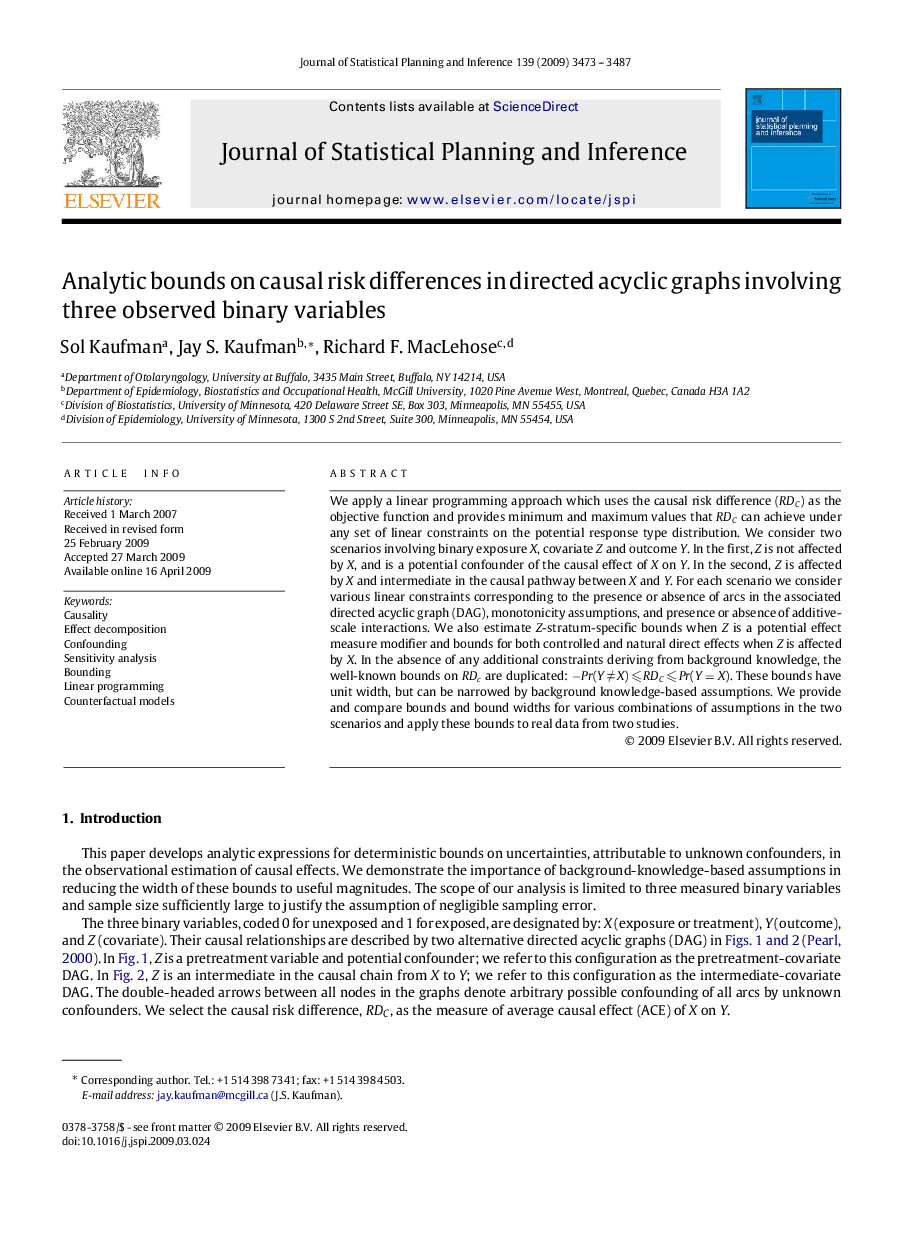| Article ID | Journal | Published Year | Pages | File Type |
|---|---|---|---|---|
| 1148253 | Journal of Statistical Planning and Inference | 2009 | 15 Pages |
Abstract
We apply a linear programming approach which uses the causal risk difference (RDC) as the objective function and provides minimum and maximum values that RDC can achieve under any set of linear constraints on the potential response type distribution. We consider two scenarios involving binary exposure X, covariate Z and outcome Y. In the first, Z is not affected by X, and is a potential confounder of the causal effect of X on Y. In the second, Z is affected by X and intermediate in the causal pathway between X and Y. For each scenario we consider various linear constraints corresponding to the presence or absence of arcs in the associated directed acyclic graph (DAG), monotonicity assumptions, and presence or absence of additive-scale interactions. We also estimate Z-stratum-specific bounds when Z is a potential effect measure modifier and bounds for both controlled and natural direct effects when Z is affected by X. In the absence of any additional constraints deriving from background knowledge, the well-known bounds on RDc are duplicated: -Pr(Yâ X)⩽RDC⩽Pr(Y=X). These bounds have unit width, but can be narrowed by background knowledge-based assumptions. We provide and compare bounds and bound widths for various combinations of assumptions in the two scenarios and apply these bounds to real data from two studies.
Related Topics
Physical Sciences and Engineering
Mathematics
Applied Mathematics
Authors
Sol Kaufman, Jay S. Kaufman, Richard F. MacLehose,
